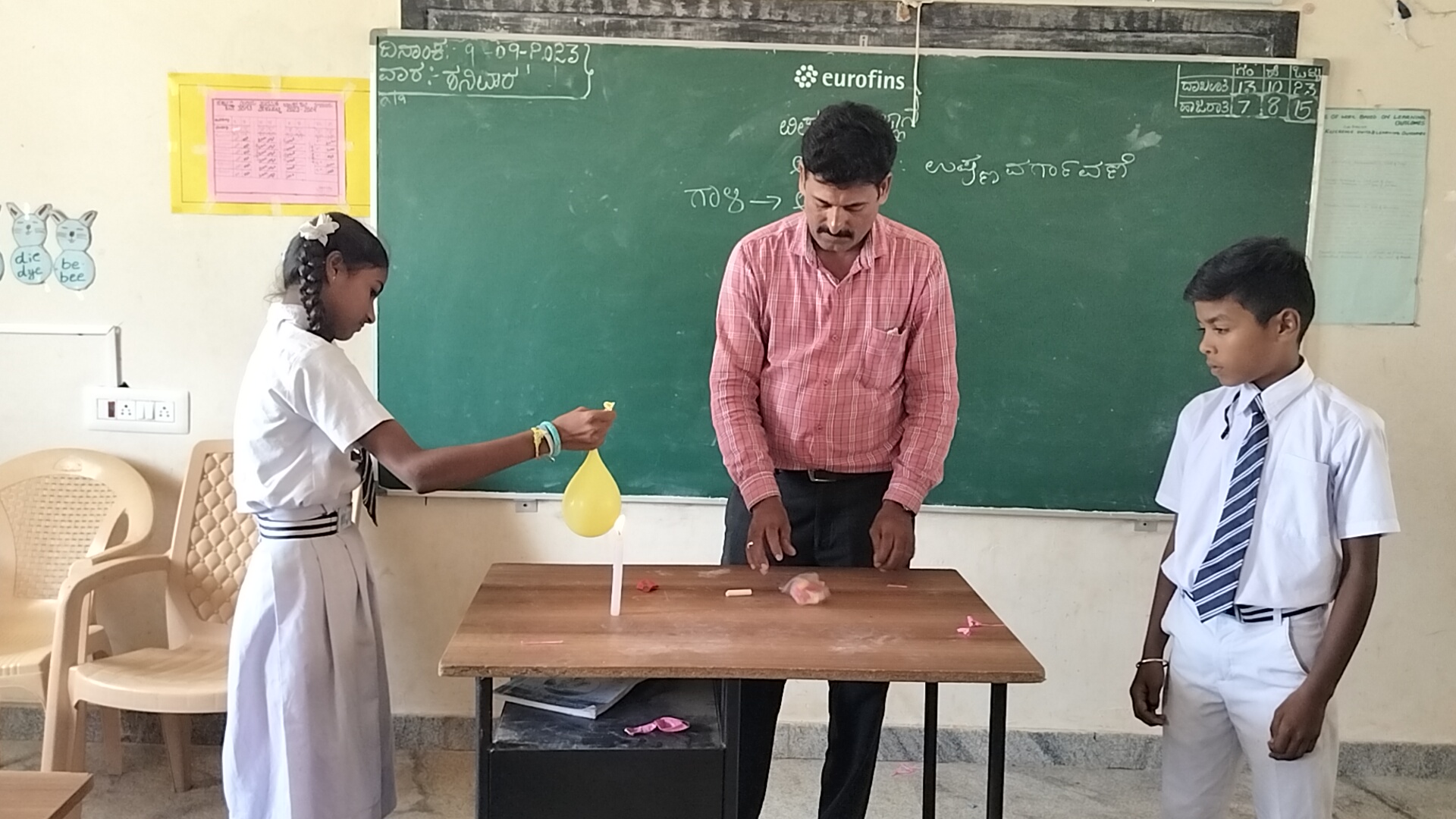Making Science accessible and fun, the ILP way! By Dr. Sudhira
The class is boisterous as always as they wait for their science teacher to conduct the next class. And she comes in with a couple of balloons and a candle with a matchstick. Before the students realize what is happening, she asks a kid to blow one of the balloons and get the other balloon filled with water. And then light a candle.
The class is suddenly silent and are curious to know what’s happening here. Next she queries them on what would happen to the balloons, one filled with air and another with water, if placed near the candle flame. The students are thinking, and she gestures to one of the kids to take it slowly towards the flame.
Boom! The one with air blows up first and the kids are stunned to see this. And the one with water hasn’t yet burst.
Now, the teacher has got the attention of all the kids and the kids are now trying to figure out what just happened. There begins the class on the effect of heat on air and water. The teacher, after hearing the possible reasons the kids give, explains that air molecules heat up faster than water molecules, thereby expanding faster, which eventually resulted in the balloon bursting. The kids are still in awe and are now able to relate and appreciate what happened a few minutes ago!
This is how India Literacy Project (ILP)’s science experiment kits have enabled teachers to make science accessible and fun.
The science experiment kit was born out of ILP’s flagship initiative, Multi-Dimensional Learning Space (MDLS). During 2015-16, the initial version of the science kit was put together by a team of volunteers and in-house teams led by Mr Pramod Sridharamurthy, Mr Harish K, and Ms Kirthana Sathyamurthy.
The science kit has evolved over the years, and has seen many changes including newer instruments (like Foldscope) and aids that are enabling teachers to use them in their classes. The present one is the fourth version and incorporates feedback received from teachers using the kit in their daily classroom activities. The kit now supports over 150 experiments that can be used to explain over 200 concepts from class 5 to 10.
The kit has been built using low-cost components that are available even in rural India. Most of the components used in the kit are not specialized and can be easily replenished even in remote schools allowing children to touch, feel and build without fear of breaking expensive items.
The kit consists of items that encourage children to tinker and build new applications of the concepts they learn, as opposed to assembling ready-made models. The familiarity of the components will help children relate to science as a natural day-to-day occurrence, rather than something that happens only in a lab or a science class.
ILP has created digital content (digital lessons, activities, and quizzes) for all chapters in science for grades 4-10, mapped to the NCERT syllabus. This content is available in editable Microsoft PowerPoint format here, https://www.ilpnet.org/resources/, and it complements the ILP Science Experiment Kit.
Till date, since 2016, 16645 science kits have been distributed by ILP reaching over 11,634 schools. During the last academic year (2022-23) alone, 7,349 kits covering about 5,817 schools across eight states were distributed by ILP.
Another critical aspect of the science kit, is the training imparted to teachers enabling them to use this. Over 12,000 teachers in Government Higher Primary and High Schools across multiple states have been trained till date.
The kits have also empowered the teachers to organize science events. Last year, as part of the National Science Day observed on 28th February every year, saw a participation of over 1000 schools in Tumakuru district of Karnataka, one of the places where MDLS is being implemented.
Do reach out to any ILP volunteers to know how this can be brought to a government school near you.
